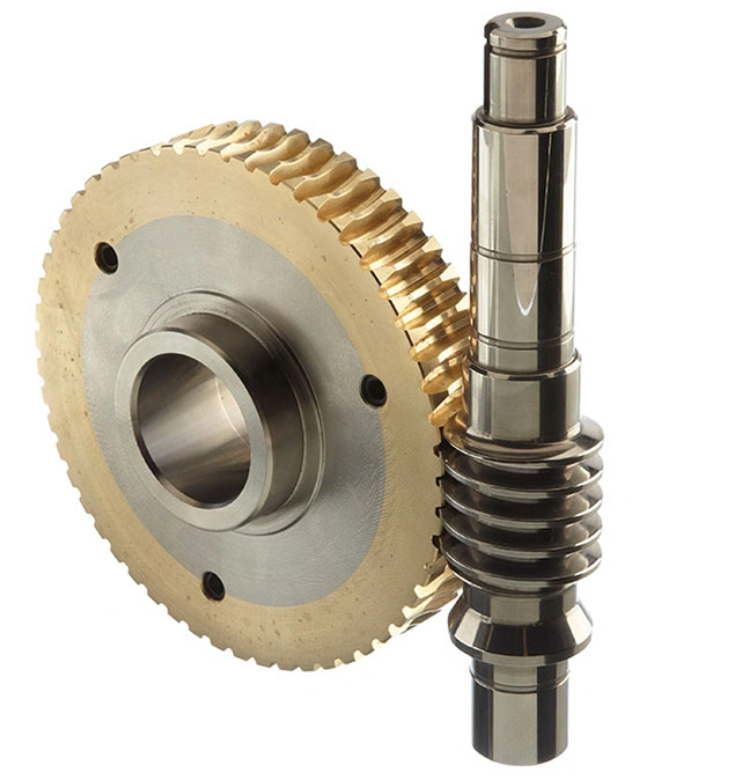A worm gearbox, also known as a worm gear reducer, is a type of mechanical power transmission device that consists of a worm screw and a worm wheel. It is used to transmit rotational motion and torque between non-parallel and perpendicular shafts.
The worm screw is a threaded shaft resembling a screw, while the worm wheel is a toothed wheel with helical teeth that meshes with the worm screw. The worm screw is typically the driving element, and the worm wheel is the driven element.

The design of the worm and worm wheel is such that the helical teeth of the worm wheel engage with the threads of the worm screw. This arrangement creates a sliding action between the teeth and the threads, resulting in a high gear reduction ratio.
One of the primary advantages of a worm gearbox is its ability to provide a large reduction ratio in a compact size. This makes it suitable for applications where a high torque output and low-speed rotation are required, such as in conveyors, lifts, winches, and various industrial machinery.
It’s important to note that due to the sliding action between the worm and worm wheel, worm gearboxes tend to have lower efficiency compared to other types of gear systems. They also generate more heat and may require special lubrication to minimize wear.
Additionally, worm gearboxes have a self-locking feature, which means that the load cannot back-drive the system and cause the motor or driven equipment to rotate in reverse. This characteristic makes them useful in applications that require mechanical holding or braking.
Overall, worm gearboxes offer specific advantages in terms of torque multiplication, compactness, and self-locking capability, making them suitable for various industrial and mechanical applications.


